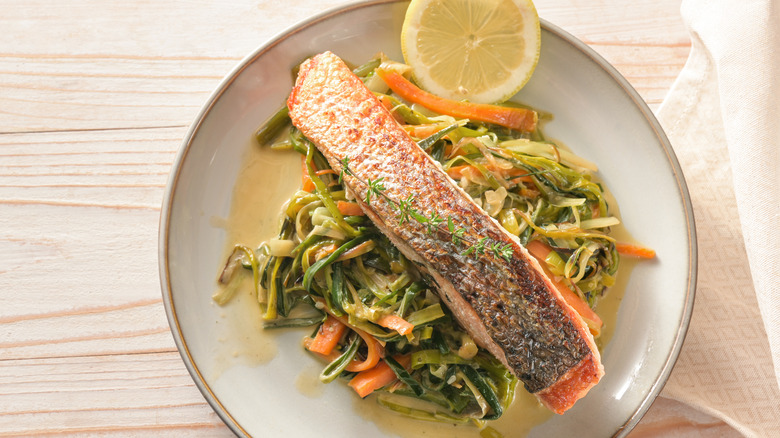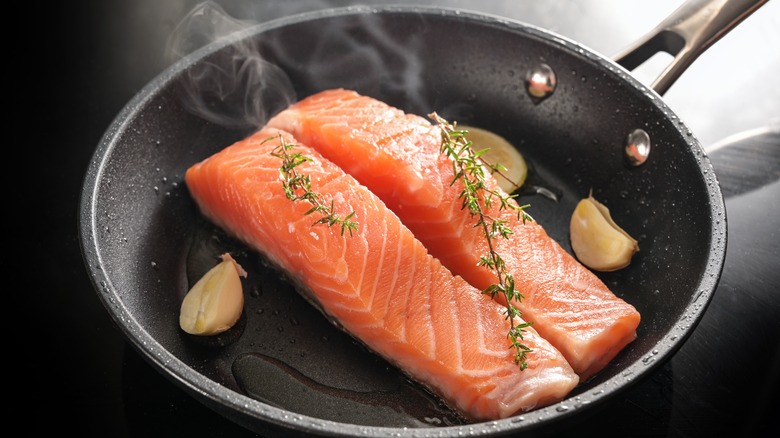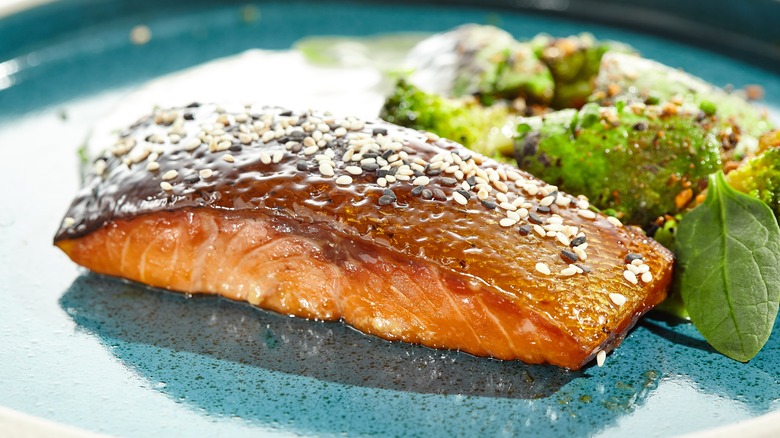The Mistake Everyone Makes With Salmon Skin
When you're buying fresh salmon from the fishmonger or your grocery store, there are many things to look out for. The color of the flesh, the scales, the brightness in its eyes, whether it's wild-caught or farm-raised; and when you've ticked all the right boxes, you ask for your cuts. This is a crucial moment where you could ruin the flavor of your fish — the perfectly-selected, beautiful fish.
Don't ask the fishmonger to remove the salmon skin. Although the skin can be annoying at times (it can stick to the pan, it can be soggy, and picky eaters can turn their noses at it), removing it is a huge mistake. This is because there are ample benefits to keeping the skin on when you cook salmon. You can remove the skin after the fish is done cooking, and we'll look the other way — but at first, it's best to keep it on, because it's a natural protector, an inductor of heat, and a flavor bomb.
Keep the skin on
Leaving the skin on can make cooking salmon easier, as it helps hold the fillet together, making it less likely to fall apart during cooking and serving. It also peels right off, if you must remove it after cooking. Additionally, the skin acts as a natural barrier in the cooking process, protecting the delicate flesh of the salmon from direct heat. If your pan or grill is very hot, let the skin take the beating. Cooking salmon skin-down helps prevent the flesh from overcooking, keeping it moist and tender.
Let's not forget about flavor and texture. Who doesn't love crispy salmon skin? The skin contains natural oils that add flavor to the fish as it cooks. When crisped up properly, it can provide a delicious contrast in texture to the tender flesh.
At the store, be sure to ask your fishmonger to scale the skin so it's clean and smooth. Most filets will already have this done. Getting rid of the scales gets rid of any unpleasant textures, so you're left with beautiful shiny skin, perfect for cooking. You should only ask the fishmonger to remove the skin if you're preparing sushi or poaching fish.
The health benefits of salmon skin
Flavor and texture, check. And it's healthy too? Oh, yeah. According to Healthline, salmon skin has the highest concentration of omega-3 fatty acids on the fish. Additionally, it is a great source of protein, vitamins B and D, and minerals like niacin and phosphorus. But these health benefits only come from fish in clean, unpolluted waters. Farmed salmon has the most amount of toxins absorbed, particularly in the Atlantic, so avoid eating the skin from those. Wild-caught Pacific salmon will be your best bet because of the clean water. It is always worth it to pay a small premium for wild-caught salmon.
Overall, incorporating the skin into the cooking process elevates the flavor, texture, and nutrition of the salmon. You can even add crispy leftover salmon skin to your salads as a crunchy garnish with an umami punch. So, the next time you're at the store, think twice before getting skinless filets. You'd be ditching, arguably, the best part of the fish.


